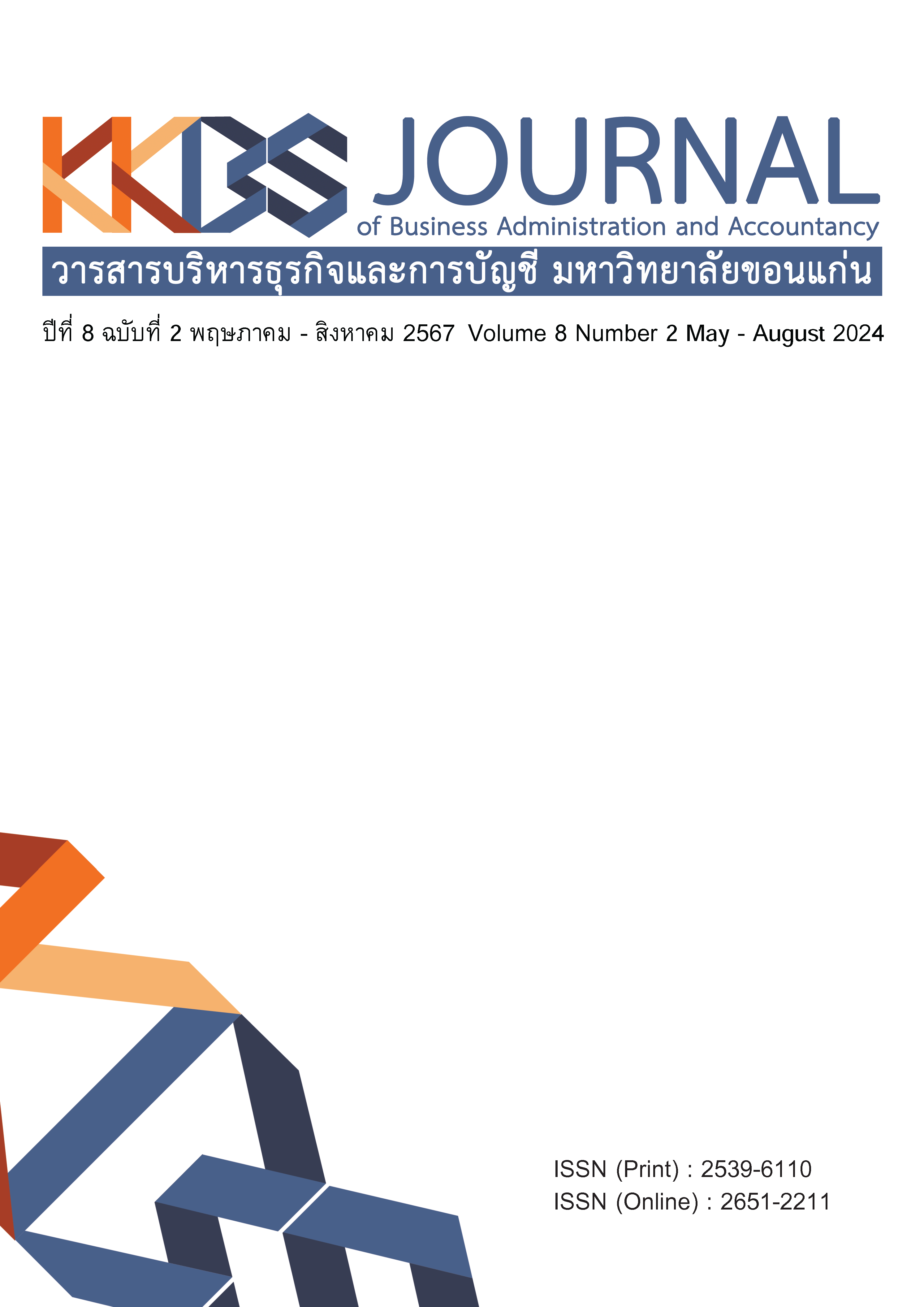The Development of Tourism Activities at Elephant Camps in Chiang Mai Province
Main Article Content
Abstract
The objectives of this research were to 1) analyze the behavior of tourists visiting an elephant camp in Chiang Mai province; 2) study the tourism activities at the elephant camps; 3) study the opinions of the communities and stakeholders; 4) suggest guidelines for the development of tourism activities at the elephant camps. The research data was collected by using the tourist questionnaire, interviews with the entrepreneurs of elephant camps, the communities surrounding the elephant camps, and related agencies, then the data was processed by calculating the average and percentage. together with qualitative data analysis.
The results of the study found that Most tourists receive information about Elephant Camp tourism through the internet. The most popular activity is feeding elephants. Most people don't like riding elephants. The factor that influences the decision to choose an elephant camp is the natural atmosphere, allowing elephants to live naturally and getting close to elephants. The elephant camp can be divided into two types: an elephant camp that has and one that doesn't show the talents of the elephants, the latter tends to be more popular. Most elephant camps adjust activities to meet the needs of tourists. Most elephant camps show responsibility towards the environment and society and build good relationships with the surrounding communities. The communities themselves see that the elephant camps are helping the community both economically and socially. But most elephant camps still lack good interpretation. Therefore, elephant camps should focus on tourism activities that give tourists the opportunity to get close to elephants and nature, the interpretation should be developed to create understanding and raise awareness of conservation of elephants as well as natural resources and the environment.
Article Details

This work is licensed under a Creative Commons Attribution-NonCommercial-NoDerivatives 4.0 International License.
The articles published in the journals are the authors' opinions, not the opinion of the editorial team or administrative staff. The articles published is copyright of the Journal of Business Administration and Accounting, Khon Kaen University.
References
Center of Elephant and Wildlife Health FVM CMU (2021). Captive elephant populations in Chiang Mai 2021. Retrieved February 10, 2024, from https://www.facebook.com/EREC.CMU/posts/5127224843957657 (In Thai)
Center of Elephant and Wildlife Health FVM CMU (2023). Captive elephant populations in Chiang Mai 2023. Retrieved February 10, 2024, from https://www.facebook.com/photo.php?fbid=668030261995911&set=pb.100063668285242.-2207520000&type=3 (In Thai)
Chatkupt, T. T., Sollod, A. E. & Sarotol, S. (1999). Elephant in Thailand: determinants of health and welfare in working populations. Journal of Applied Animal Welfare Science. 2(3), 187-203.
Chotmanakul, S. & Ongkhluap, S (2021). Visitor expectations and behaviours at elephant camps in Eric Laws, Noel Scott, Xavier Font, and John Koldowski (eds). The Elephant Tourism Business. Oxfordshire UK: CABI. 64-72.
Cohen, E. (2008). Explorations in Thai tourism. Emerald, Bingley, UK.
Cohen, E. (2010). Panda and elephant – contesting animal icons in Thai tourism. Journal of Tourism and Cultural Change. 8(3), 154-171.
Curtin, S. & Day, C. (2021). Alternative forms of elephant tourism. in Eric Laws, Noel Scott, Xavier Font, and John Koldowski (eds). The Elephant Tourism Business. Oxfordshire UK: CABI. 73-84.
Department of Tourism. (2013). Thailand tourism standard: standards for organizing elephant camp activities for tourism. Retrieved December 20, 2018, from https://www.dot.go.th/ebooks/ebooks-view/435 (In Thai)
Khlaiwichian, S., Buranapansak, K. & Nakincha, K. (2011). Guidelines for developing elephant village tourist attractions in southern Isan. The Thailand Research Fund. (In Thai)
Kotler, P., Bowen, J. & Makens, J. (2010) Marketing for hospitality and tourism. US: Prentice Hall.
Kotler, P. & Keller, K. L. (2016). Marketing management (15th Global ed.). US: Pearson Education.
Ministry of Tourism and Sports. (2015). Tourism Statistics 2015. Retrieved on November 10, 2015, from https://www.mots.go.th/news/category/492
Ongkhluap, S. (2018). Elephant and tourism in Chatchote Thitaram and Chalearmchat Somgird (eds). Chang-Kho-Yang Elephant Camp Management for Tourism. Chiang Mai: Excellent Centre for Elephant and Wildlife Research. 75-87. (In Thai)
Sakulsukmongkol, D. (2011). Tourism business operations and elephant camp management that affects the satisfaction of foreign tourists in Phra Nakhon Si Ayutthaya province. Documents from the 2nd National Academic Conference Presentation, Phuket Rajabhat Institute. (In Thai)
Schiffman, L. G., & Kanuk, L. L. (1997). Consumer behavior. US: Pearson Prentice Hall.
Schiffman, L. G., & Kanuk, L. L. (2010). Consumer behavior (10th ed.). US: Pearson Prentice Hall.
Solomon, M. R., Marshall, G. W., & Stuart, E. W. (2019). Marketing: real people, real choices. US: Pearson Prentice Hall.
Swarbrooke, J. & Homer, S. (1999). Consumer behavior in tourism concepts and analysis. GB: Butterworth-Heninemann.
Thai Elephant Alliance. (2022). Thai elephant crisis. Retrieved Dec 20, 2022, from https://www.thaielephantalliance.org/en/detail/10.html (In Thai)
The Center of Excellence in Elephant and Wildlife Research. (2016). Elephant camps statistics. Retrieved on December 2, 2016, from https://www.asianelephantresearch.com (In Thai)
Tourism Authority of Thailand. (2001). National ecotourism action plan. Bangkok: Alsa. (In Thai)
Tourism Authority of Thailand. (2013). Tourism marketing plan 2012. Retrieved September 2, 2013, from http://thai.tourismthailand.org/about-tat/policy-marketing-plan (In Thai)
Weaver, D. & Lawton L. (1999). Sustainable tourism: a critical analysis. Research Report 1, CRC for Sustainable Tourism.
World Tourism Organization. (2013). Tourism 2020 vision. Retrieved September 2, 2013, from http://www.unwto.org/mkt/mkt_com.html
Yamane, T. (1973). Statistics an introductory analysis. New York: Harper & Row.


